This history was compiled from information found in this document and with the assistance of FWC/MGCE members and emeriti.
 September 1973: A phone call between Crystal Theodore (Art) and Frances Cavanagh (English) led to the first "unofficial" meeting of the Caucus held on September 10, 1973 at the Harrisonburg Electric Commission in downtown Harrisonburg. Theodore was a prime mover in the Caucus. She came to JMU as the Head of the Art Department in 1957. Prior to that, she served as a First Lieutenant in the U.S. Marine Corps and earned her art degrees utilizing the G.I. Bill. In the first section of the Caucus’ history, she wrote that the organization was created in response to the “inequities between women and men in Academe: salary, rank, promotion, policies, and the like.” Men dominated faculty positions as well as administrative positions. There were only three female deans and sprinkling of female department heads.
September 1973: A phone call between Crystal Theodore (Art) and Frances Cavanagh (English) led to the first "unofficial" meeting of the Caucus held on September 10, 1973 at the Harrisonburg Electric Commission in downtown Harrisonburg. Theodore was a prime mover in the Caucus. She came to JMU as the Head of the Art Department in 1957. Prior to that, she served as a First Lieutenant in the U.S. Marine Corps and earned her art degrees utilizing the G.I. Bill. In the first section of the Caucus’ history, she wrote that the organization was created in response to the “inequities between women and men in Academe: salary, rank, promotion, policies, and the like.” Men dominated faculty positions as well as administrative positions. There were only three female deans and sprinkling of female department heads.
October 1973: The first official meeting of the "Faculty Women of Madison College" was held October 15, 1973, on campus. Rose Mary Rummel (Physical Education) was elected as the first president with 38 members. Fay Reubush (Director of Student Affairs) was elected as the first vice president, Marilyn Lazorak (Math/Natural Sciences) the first secretary, and Marian Emerson (Home Economics) the first treasurer. The major concern of this group was that the administration was not making effective use of the abilities of faculty women and administrators, as well as gender-based salary inequality.
1974: A new group of women stepped up to lead: Crystal Theodore (Art), Marilyn Crawford (Kinesiology), Elyn Feldman (Physical Education) and Ruth O’Gorman (Library). They reached out to the American Association of University Professors (AAUP), conducted surveys of pay by rank, and created an affirmative action committee and a search committee to advise the committee.
May 1975: The organization was renamed The Madison College Faculty Women’s Caucus. The name was considered controversial because some felt the word “caucus” was too political, adversarial. Dues increased to $5.
1975: With only 35 members, they began work on the establishment of a Center for Women, were actively involved in the mail in Equal Rights Amendment campaign, and created a resources committee. The affirmative action committee was especially active due to the fact that the Dr. John Mundy, affirmative action officer, was noted as an unresponsive person. Pat Bruce (Kinesiology), Nancy O’Hare (Education) and Elizabeth Neatrour (Foreign Languages) stepped up as leaders.
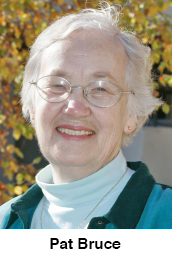 |
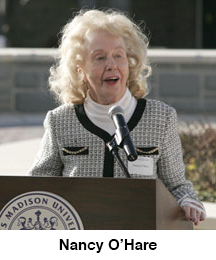 |
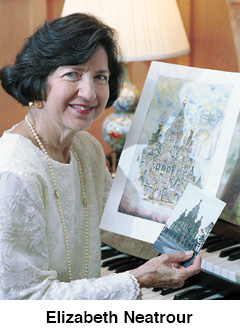 |
November 17-21, 1975: First Women's Week (sponsored by the Caucus).
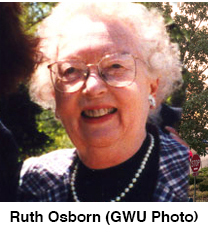 November 21, 1975: Established and held the first Dominion Lecture, which focused on bringing a female speaker to Madison College. The first speaker was Ruth H. Osborn, Dean of Continuing Education for Women at George Washington University.
November 21, 1975: Established and held the first Dominion Lecture, which focused on bringing a female speaker to Madison College. The first speaker was Ruth H. Osborn, Dean of Continuing Education for Women at George Washington University.
1976: The Caucus updated their goals to broaden the scope of the organization:
o A continuing endeavor to seek the appointment of women to college-wide committees and to positions as heads, deans, and vice presidents
o The presentation of the annual Dominion Lecture and the Outstanding Woman of Virginia Award, intended to honor two different women
o The appointment of a representative to the Congress of Women’s Organizations
o Active support of ERA legislation
o A breakfast in November honoring women members of the Board of Visitors
1978: The hiring committee began making progress but the struggle with salary inequities continued. The explanations for the pay gap were the same that are often heard today: different experience before, time in rank, errors and job market. Work on male/female commencement speakers.
1979: Letter to President Carrier commending his efforts to hire more women faculty. Teresa Gonzalez and Violet Allain become Caucus leaders.
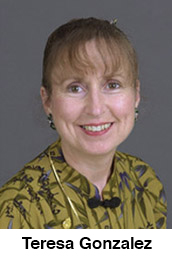 |
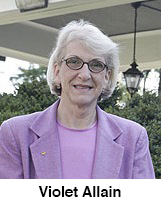 |
1980: Due to Caucus efforts, university budget contained allocation for "equity" monies for women. The "Women's Resource Network" was established.
1982: Administration agreed to put women on all search committees.
1983: Membership was at an all-time high with 88 paid members (including four men). The organization felt they had achieved significant progress with administration taking concerns seriously. Hiring improved, women were being placed on committees and the word “sexism” was beginning to be used. Awards were established for Outstanding Research in women's issues and service to the Caucus.
March 15, 1984: Breeze headline: "Administrator Says Women Less Qualified": quote from John Mundy, Affirmative Action Officer. Caucus responds through meeting with President Carrier, letter of apology sent to Women's Caucus, Mundy replaced with Elizabeth Ihle (Education).
1989: The Caucus was instrumental in beginning Minor in Women's Studies. Establishment of Bruce-Crawford-Morrison-Rummel Scholarship Fund (largest single scholarship fund on campus). Caucus motivation for President's "think tank" on women's issues at JMU, out of which came the Women's Issues Committee. Women put on University Commissions and Committees at university level.
1990: Establishment of Professional Development Fund.
1993: Caucus continues work on improving status of faculty women at JMU.
1994: Under the leadership of Elizabeth Ihle (Education), the Caucus motivated the JMU administration to conduct a gender equity study, revealing that a number of women on campus were not being paid at the same level as their male peers. The administration put in place a review of salaries that lead to significant salary adjustments being made. As a result, female faculty members who were underpaid received salary increases.
1995: Salary increases received except for women in administration.
1997-98: Caucus fights for more female administrators and coaches in Athletics.
1998: Caucus celebrates 25 years of actively working for women at JMU.
